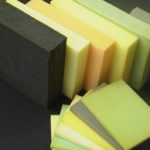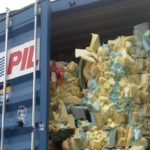Rebound foam is a molded polyurethane product that is produced from pieces of crushed (milled) polyurethane foam that are glued together by a binder. Polyurethane foam manufacturers are always looking for a way to recover polyurethane foam waste in order to minimize production costs. However, usually 30% of polyurethane foams become waste after cutting and shaping the foam during production. Without recovery, this amount of waste is a waste of money for producers.
With the development of practical polyurethane recycling methods, almost any piece of foam waste can be recovered. Most of the flexible polyurethane foams are ground into small pieces and used as the underlay of the carpet. This process is so successful that in many countries the demand for waste foam has exceeded its supply. Manufacturers of rebound foam for carpet underlay consume 200 million kg of waste foam annually.
Every kilogram of waste foam that is sold helps reduce the production cost of the manufactured foam product. But how can you recycle the foam waste? The process of producing waste foam or adding it to the carpet rebound substrate is very simple. There are specific instructions to facilitate the recycling process of waste foam. First, the waste foam must be clean, dry and free of other materials. A small piece of metal may cause serious damage to the waste foam production machine.
Although the majority of waste polyurethane foams are used as carpet underlays, foam waste can be used in packaging, pillow filling, toy and doll making industries. The relatively high density of rebound foam and its high reversibility have made waste foam a suitable option in the production of cushions in furniture making, sound insulation, sports flooring and other applications.
The quality of rebound foam can be influenced by the choice of raw materials, size of foam pieces, density factor, type and quality of binder. For this reason, flexible rebound foams find the ability to be used in certain applications that could not be achieved by cold foams or hot injection foams.
The foam rebound production process includes the following steps:
- Collection and classification (based on size) of waste foam
- Crushing foam waste with a grinder
- Mixing with binder or glue
- Condensing to the desired shape and density
- Acting as a glue or binder
- Baking with glue or binder
- Cutting foam to different sizes



